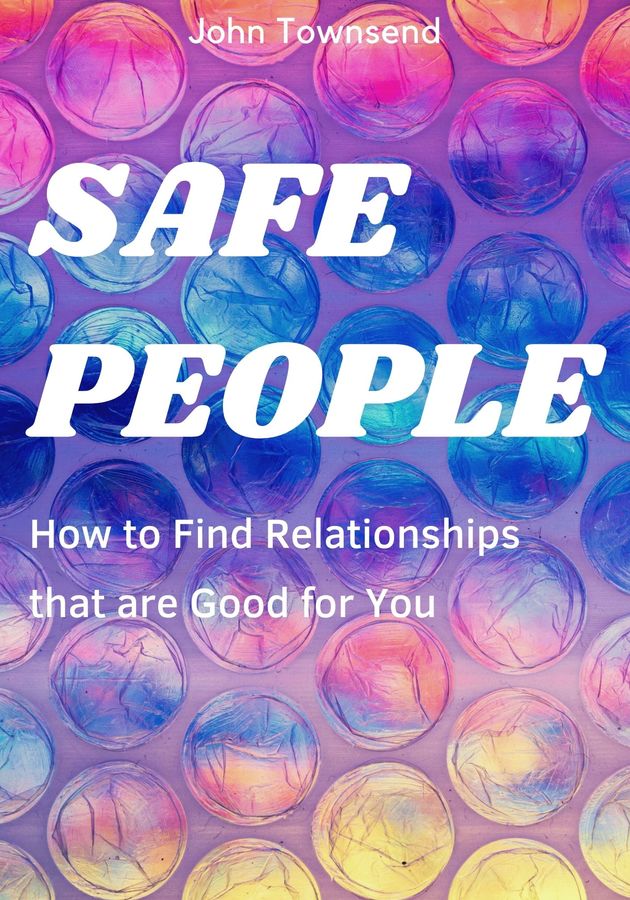Matthew Sockolov, the founding teacher of One Mind Dharma, struggled with bipolar disorder and addiction throughout most of his adolescence. One day, his dad gave him a copy of “The Miracle of Mindfulness,” a simple introduction to mindfulness practices by the respected Vietnamese Zen monk and peace activist Thich Nhat Hanh. Slowly but surely, the book changed his life.
At the age of 18, Sockolov first sat down in a meditation class. Soon enough, he realized that his reactions to the painful experiences in life were causing him much more pain than the experiences themselves. At the age of 19, with the help of his local meditation community, he got sober. He has never looked back.
As the years passed by, Sockolov’s meditation practice became an increasingly important part of his life. In 2014, he even got a chance to lead some meditation groups in California. A year later, he was nominated by his teachers to teach meditation for a program at Spirit Rock Meditation Center, “one of the most well-respected meditation centers in the West.”
Finally, in 2017, he opened the One Mind Dharma meditation center, where he offers customized, guided meditations to an ever-growing group of vulnerable, honest and interested individuals. In “Practicing Mindfulness,” he shares some of the basic exercises. Get ready to discover them!
Mindfulness 101: nine aspects of mindfulness practice
Mindfulness is often described as the practice of simply “being in the present moment.” However, in the opinion of Sockolov, that is misleading, since it is just one aspect of the practice and merely “the first step in bringing your attention to whatever is happening here and now.” There are at least eight more. These are:
- Seeing clearly. Most of the time, we don’t know precisely what we’re feeling – and that’s why we react inappropriately in so many situations. Mindfulness helps people correctly identify their feelings and properly recognize the experiences they are going through. This, in turn, helps them react appropriately.
- Letting go of judgment. Our mind constantly labels our feelings, thoughts and ideas as being either good or bad, right or wrong. Such value judgments, however, can often become a burden. That’s why in mindfulness practice, people are taught how to let go of them for good.
- Being equanimous. As defined by Sockolov, equanimity is “the quality of remaining balanced, especially when presented with difficult or uncomfortable circumstances.” That’s one of the main objectives of mindfulness practice. To paraphrase Kipling, the goal is to rise above the circumstances, to treat both Triumph and Disaster just the same – as two impostors.
- Allowing everything to belong. Most people invite some experiences into their lives and push others away. In mindfulness, however, the latter is not allowed. You do not need to exclude anything: you are, after all, everything that you think, feel and experience. As English monk Ajahn Sumedho often tells his students, “Everything belongs.”
- Cultivating beginner’s mind. Unfortunately, the more experienced we are, the more we experience life on “autopilot.” Mindfulness teaches people to cultivate the mind of the beginner, or even better, the mind of the child. Meaning, it reintroduces people to the beauty of the world, helping them observe everything with eyes full of wonder, as if it’s their first time.
- Being patient. In Herman Hesse’s novel “Siddhartha,” when a merchant asks the title character what useful things he has learned from life, the young monk Siddhartha replies: “I can think, I can fast, I can wait.” Mindfulness teaches all of these three things, but particularly the last one – patience. And patience is underrated: as a Sudanese proverb says, it is actually the key that solves most problems.
- Making a friend. As you probably know from experience, few things are more exhausting than waging a war against your own mind. With mindfulness practice, you can put an end to this war – and convert your mind from your greatest enemy to your best friend.
- Honoring yourself. To honor yourself means to appreciate the efforts that have taken you to wherever you currently are in life. Coincidentally, that’s the only way to proceed in the right direction in the future. Only by honoring yourself can you allow the necessary space for further growth.
A few research-based benefits of mindfulness
Even though the field of mindfulness and meditation research is relatively new, it has evolved greatly during the past decades, continually providing ever-newer evidence in favor of the anecdotal claims meditators have made for centuries. In other words, it’s a scientific fact that meditation practice brings many benefits, including the following few:
- Stress reduction. According to a 2010 study, mindfulness is one of the most effective ways to relieve stress, and it helps even if you have been previously diagnosed with an anxiety-related disorder.
- Improved working memory and focus. Several studies have shown that people practicing mindfulness have better memory and are more focused than the rest of the population. Research at the University of California, Santa Barbara, found that these benefits become perceptible even after just two weeks of mindfulness practice.
- Physical benefits. Mindfulness isn’t just about taking care of your mind – it’s about taking care of your body as well. Research in the past decade has discovered that regular meditation lowers blood pressure, eases inflammation, improves digestion and strengthens the immune system.
- Better sleep. According to Harvard Health, mindfulness helps with both falling asleep and staying asleep. And it does so regardless of the time of the day you practice it!
- Creative problem solving. In 1982, researchers found that mindfulness can help practicians solve creative problems faster and better than in regular circumstances. As Sockolov explains, “Cultivating stillness in the mind helps you gain the ability to think in new ways, look at problems from a different perspective, and work more effectively toward a solution.”
- Fewer feelings of loneliness. In January 2018, then-British prime minister Theresa May appointed a Minister of Loneliness to tackle the country’s rising suicide and depression rates. According to a recent University of California study, all she should have done was start a nationwide “meditate more” campaign. Apparently, just a few weeks of practicing mindfulness motivates greater social engagement, which then reduces loneliness.
- Improved self-esteem. Mindfulness is one of only a few practices that has been shown to boost self-esteem across cultural boundaries. In other words, mindfulness practitioners are more content with who they are and where they are in life than most other people.
- Mood regulation. Mindfulness can reduce depression and regulate mood disorders, so much so that in psychology, there is something called mindfulness-based cognitive therapy (MBCT). However, as Sockolov remarks, be aware that mindfulness is not a substitute for proper clinical care – but a great aid!
Basic mindfulness exercises
Now that we’ve gone over the most important aspects and benefits of mindfulness, it’s time we take a look at a few meditation exercises that should help you “cultivate the ability to be here and now with patience, clarity, and strength.” We start with the very basics, that is to say, with two exercises suitable for novices and beginners.
The first one is called “finding the breath” and it’s not only the simplest, but also the most fundamental of all mindfulness exercises; it is also “a constant you can return to anytime you need a little centering.” To practice it properly, first find a comfortable position for the body, at a place where you can minimize all environmental distractions. Then, gently close your eyes and allow them to relax. Next, bring your awareness to the abdomen and try to feel it rising and falling. After relaxing your muscles there, move your awareness up to the chest and bring it then all the way to the nostrils. Every time your mind starts wandering, refocus your attention to one of these three stops. Try to experience yourself breathing for a few minutes.
The second exercise we’ve chosen for you is called “feel the love” and should help you allow yourself to be cared for. As with the first exercise, it begins with finding a comfortable position for your body to relax. After taking a few deep breaths and letting your mind be at ease, try to think of a person who cares for you and picture them standing in front of you, offering you phrases of “loving-kindness,” or metta as it is called in Sanskrit. After receiving these intentions for five minutes, add another person to the mix, and then a third. Don’t struggle – try to accept the wishes with an open heart. Kindness can sometimes be overwhelming: let it overpower you, let it prevail. At the end of the practice – which should last about 20 minutes – open your eyes slowly and make your way back into daily life with patient kindness.
Everyday mindfulness
As Sockolov remarks, even though meditation is the best and most powerful way to ground your mindfulness practice, one can’t spend their entire day sitting in meditation – especially not in our dynamically hectic, but otherwise very dear and opportunity-filled, 21st century. That’s why it’s necessary to bring mindfulness to your everyday activities as well. The following two exercises should help you achieve this.
The first one is called “the awareness trigger” and is actually a meta-exercise, that is to say an exercise to help you remember to practice mindfulness throughout the day. With this in mind, try to pick one task or event in the morning that is likely to happen a few times during the day. It can be anything from seeing the color red to sending an email. Then, set a clear intention to use this event as a trigger for mindfulness throughout the day. Now, whenever you notice the trigger, pause and practice a few moments of mindfulness, perhaps most suitably the introductory “finding your breath” exercise. Not only is it easy but it can also help you reorient and recenter yourself in no time!
The second exercise we’ve chosen for this part is called, amusingly, “Where are the feet?” It originates in trauma therapy where patients are often encouraged to bring awareness to their feet, thereby engaging their parasympathetic nervous system and calming both their body and their mind. Do the same. Put a sticky note on your computer or set a reminder on your phone containing the following simple and seemingly silly question: “Where are my feet?” Every time you see the sticky note or your phone beeps with the reminder, bring your awareness to the feet. Try scanning them from the heel to the toes and try to feel how they are resting. Take a few deep breaths while doing that. With each exhalation, allow your feet to relax.
Mindful moods
Most of us are reactive individuals, acting first and thinking second. Unfortunately, our unhappiness doesn’t stem from negative events, but from our immediate, inappropriate reactions to them which then inevitably leads to either justifications or regrets. Mindfulness practice is one of the best ways to deal with painful experiences or undesirable feelings such as frustration, anger or sadness because it induces calmness and prolongs our reaction time, thereby giving us an opportunity to respond better. Here’s a great exercise to calm your body in those situations when your mind is agitated.
First, pick a position in which you would want to do this exercise. The good news is that it can be done in any position, anywhere or anytime you need to calm down. Next, allow your eyes to close. Take a few deep breaths. As you breathe in, picture your left arm filling with the energy of the breath; as you breathe out, picture it pushing the breath energy out through your fingerprints. After two or three minutes, switch to the right arm. Then, shift your awareness to the torso and, finally, to both of your legs. At the end, bring it all together. As you breathe in, imagine your entire body filling in with the power of the breath. As you breathe out, picture it pushing the breath energy out of itself, through the fingertips, the base of the spine, and the feet.
The mind and the body are connected – when one of them is calm, the other follows suit. That’s why it’s difficult to deal with negative feelings – when you’re angry or frustrated, it’s not just your mind, but your entire body that experiences these emotions. One of the best ways to let go of them is to learn how to embrace them. You can do it in less than 10 minutes with the help of the following exercise.
Start by finding a comfortable position and give yourself time to settle. Don’t ignore the unpleasantness: instead, try to focus your undivided attention to it. Identify it and decide whether it’s frustration or fear, sadness or sorrow. Finally, make space for the emotion inside your heart by offering the following few phrases of compassion: “You are welcome here. There is space for you. Allow me to receive you with compassion.”
Remember: the more you resist the unpleasantness, the more unpleasant it grows. They don’t say compassion is the antidote for all sickness for no reason. Until you learn to accept yourself – your entire self – you will never be able to accept others as they are nor will you learn to extend the circle of your compassion to all other living things. Apropos, humanitarian Albert Schweitzer repeatedly said that only by extending compassion human beings can find inner peace.
Final notes
“Practicing Mindfulness” is an excellent guide to mediation and mindfulness, especially for beginners. It’s brief, well-written and nicely structured. Most importantly, each of the 75 exercises are broken down into easy-to-follow steps and most of them are short and can be practiced anywhere and at any hour. Even if you know them, Sockolov’s book can serve as a nice reminder.
12min tip
Mindfulness – just like love or kindness – isn’t a feeling but a practice. Meaning, it requires discipline, concentration and a lot of effort. The good news is that the more you practice it, the more easily it comes. So, be patient and persistent.





























